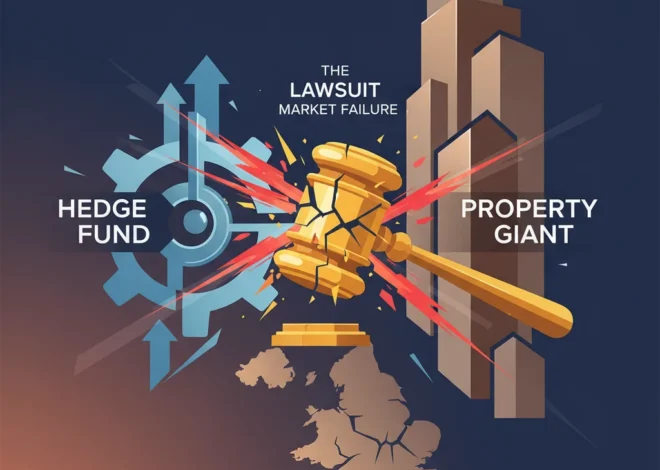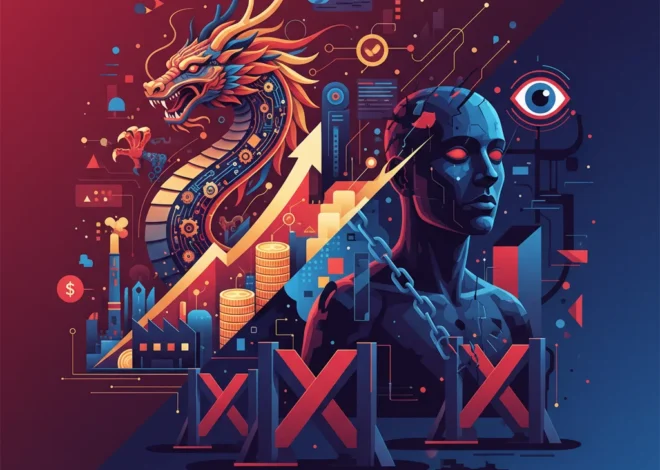
Beyond the Textbook: The High-Stakes Debates Redefining the Future of Finance
In the hallowed halls of the world’s most prestigious business schools, the case studies have changed. The classic lessons on Ford’s assembly line or Coca-Cola’s marketing genius, while still valuable, are now footnotes to a curriculum grappling with real-time, unresolved dilemmas. The modern business classroom has transformed into a crucible where the next generation of leaders, investors, and policymakers debate the very architecture of our future economy. These aren’t just academic exercises; as highlighted by forums like the Financial Times’ Business School Debates, the conclusions drawn here will ripple through boardrooms, trading floors, and regulatory bodies for decades to come.
The core questions being asked are no longer about optimizing the known, but about navigating the unknown. They tackle the fundamental disruptions reshaping finance, investing, and global economics. From the rise of decentralized finance to the contentious mandate of ESG investing, these debates are the intellectual battlegrounds where tomorrow’s market realities are being forged. Understanding them is no longer optional—it’s essential for anyone serious about navigating the complex world of modern finance.
The Fintech Disruption: Revolution or a New Coat of Paint?
The most immediate and visible debate centers on the relentless march of financial technology, or fintech. The central question is profound: Is fintech a genuine revolution destined to unseat the titans of traditional banking, or is it merely a collection of innovative features that incumbents will ultimately acquire and absorb?
Neobanks vs. The Establishment
On one side of the classroom, students argue that the agile, user-centric models of neobanks and digital payment platforms represent a fundamental paradigm shift. They point to lower overhead, frictionless user experiences, and an appeal to a younger demographic that has little loyalty to brick-and-mortar institutions. They argue that traditional banking, burdened by legacy systems and a rigid corporate culture, is simply too slow to compete effectively. The global adoption rates support this view, with some analyses suggesting that more than two-thirds of digitally active consumers now utilize fintech services for money transfer and payments (source).
On the other side, the argument is one of resilience and regulation. Skeptics contend that while fintech excels at the customer-facing front-end, the complex, highly regulated “plumbing” of the financial system—clearing, settlement, and compliance—remains the domain of established banks. They argue that most fintechs are not profitable and rely on venture capital to survive, while large banks have immense balance sheets, deep customer trust, and the resources to either build or buy any technology that proves successful. The debate isn’t about whether technology will change banking, but who will ultimately own the customer and the profits.
The Canary in the Reading Room: Why a Library Pay Dispute is a Critical Signal for the UK Economy
The Blockchain Paradox: Infrastructure of the Future or a Digital Dead End?
No topic sparks more fervent debate than blockchain and its most famous application, cryptocurrency. The classroom is sharply divided between evangelists who see it as the foundation for a more open and efficient financial system, and pragmatists who view it as a solution in search of a problem, plagued by volatility, scalability issues, and regulatory uncertainty.
Cryptocurrency as a Modern Asset Class
Is Bitcoin “digital gold” or a purely speculative bubble? This question dominates investment-focused discussions. Proponents argue that its decentralized nature and finite supply make it an ideal hedge against inflation and currency debasement, a crucial component in a modern diversified portfolio. They point to its growing acceptance by institutional investors and its resilience in the face of market shocks. Opponents, however, highlight its extreme volatility, its use in illicit activities, and the lack of intrinsic value, arguing that its price is driven by little more than market sentiment. The debate forces a re-evaluation of what constitutes “value” and how risk is measured in the digital age, profoundly impacting modern trading and investing strategies.
Beyond the Hype: Decentralized Finance (DeFi)
Perhaps the more sophisticated debate looks past Bitcoin’s price and focuses on the potential of Decentralized Finance (DeFi). Built on blockchain platforms with smart contracts, DeFi aims to recreate the entire financial system—lending, borrowing, insurance, trading—without traditional intermediaries like banks. The potential for reducing costs, increasing transparency, and providing access to financial services for the unbanked is immense. However, the challenges are equally daunting, including the risk of smart contract bugs, a lack of investor protection, and the significant legal and regulatory gray areas. The table below illustrates the core tensions debated in classrooms.
This table compares the core tenets of the existing financial system with the promises of its decentralized challenger.
| Feature | Traditional Finance (TradFi) | Decentralized Finance (DeFi) |
|---|---|---|
| Intermediaries | Relies on banks, brokers, and clearinghouses | Peer-to-peer via automated smart contracts |
| Accessibility | Requires identity verification; can be exclusive | Open to anyone with an internet connection and crypto wallet |
| Transparency | Largely opaque; operations are internal to institutions | Radically transparent; all transactions are on a public ledger |
| Operating Hours | Typically 9-5 on weekdays, with settlement delays | 24/7/365 with near-instant settlement |
| Governance | Centralized corporate and regulatory control | Decentralized, often through community voting (DAOs) |
The ESG Mandate: Profitable Principle or a Performance Drag?
The debate over Environmental, Social, and Governance (ESG) investing has moved from a niche interest to a central pillar of corporate finance and investment management. The core conflict: Is ESG a legitimate framework for identifying resilient, long-term investments and a moral imperative for modern capital, or is it a politically-driven movement that compromises investor returns for ill-defined social goals?
Advocates argue that companies with strong ESG practices are better managed, less prone to regulatory and reputational risk, and better positioned for a future defined by climate change and social awareness. They present data suggesting that strong ESG performance correlates with lower costs of capital and superior long-term stock market performance. Conversely, critics raise serious questions about “greenwashing,” where companies make misleading claims about their environmental credentials. They also point to the lack of standardized metrics, which makes it difficult to compare companies apples-to-apples. A recent analysis cited in academic circles suggests that funds with strict ESG exclusion criteria may underperform broader market indices by up to 1-2% annually during certain market cycles (source), fueling the debate over whether investors are paying a “green premium” for their principles.
The New Macroeconomics: Navigating a Post-Pandemic World
Finally, the foundational principles of economics are themselves up for debate. The twin shocks of the pandemic and subsequent geopolitical conflicts have upended decades of conventional wisdom, forcing a radical rethink of everything from inflation to globalization.
Inflation: Transitory Blip or a Structural Shift?
The sharp rise in inflation sparked one of the most significant economic debates in a generation. Was it a “transitory” phenomenon caused by supply chain bottlenecks and stimulus checks, as some central bankers initially argued? Or does it represent a more permanent, structural shift in the global economy, driven by deglobalization, tight labor markets, and the costs of the green energy transition? The answer has massive implications for interest rate policy, the stock market, and the future of banking. Business school students are now modeling scenarios that were unthinkable just a few years ago, challenging the very theories that have guided monetary policy for decades.
The Future of the Global Supply Chain
The pandemic exposed the fragility of the hyper-efficient, “just-in-time” global supply chain. The new debate pits efficiency against resilience. Should companies continue to optimize for the lowest cost, often relying on single suppliers in distant countries? Or should they prioritize resilience by “onshoring” or “near-shoring” production, diversifying suppliers, and holding more inventory? This shift could fundamentally alter the landscape of international trade and economics. While a resilient supply chain protects against disruption, it also means higher costs, which could contribute to sustained inflationary pressures—a dilemma with no easy answer and one that will define corporate strategy for years to come. Recent reports indicate that over 40% of multinational corporations are actively reconfiguring their supply chains to enhance resilience, even at the expense of short-term efficiency (source).
Beyond the Ballot Box: How Off-Year Elections Signal Major Shifts for the Economy and Your Portfolio
Conclusion: The Classroom as a Crystal Ball
The debates unfolding in business schools today are more than just intellectual sparring. They are a live preview of the challenges and opportunities that will define the next era of the global economy. The questions being asked—about the nature of money, the purpose of a corporation, the structure of the financial system, and the balance between global efficiency and local resilience—have no simple answers. They require a new generation of leaders capable of thinking critically, embracing ambiguity, and making high-stakes decisions with incomplete information. For investors, executives, and professionals, paying attention to these discussions isn’t just an academic curiosity; it’s a strategic imperative for understanding the forces that are shaping the future of finance and the world.


